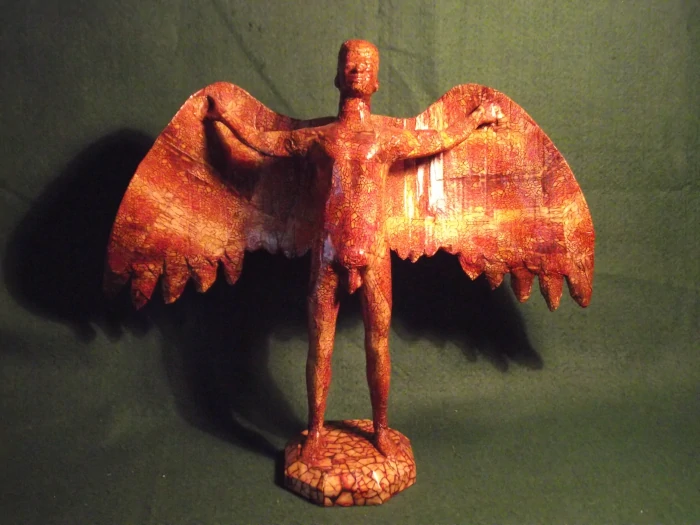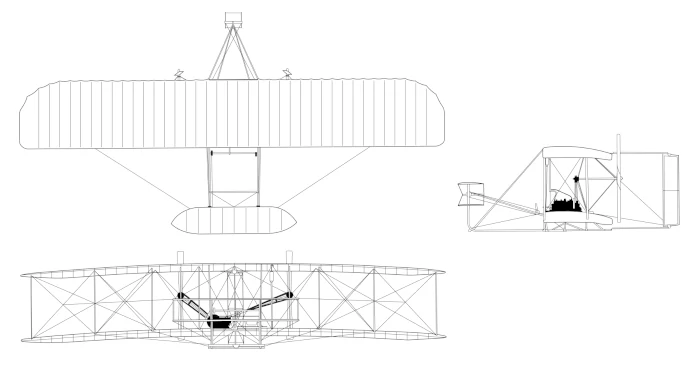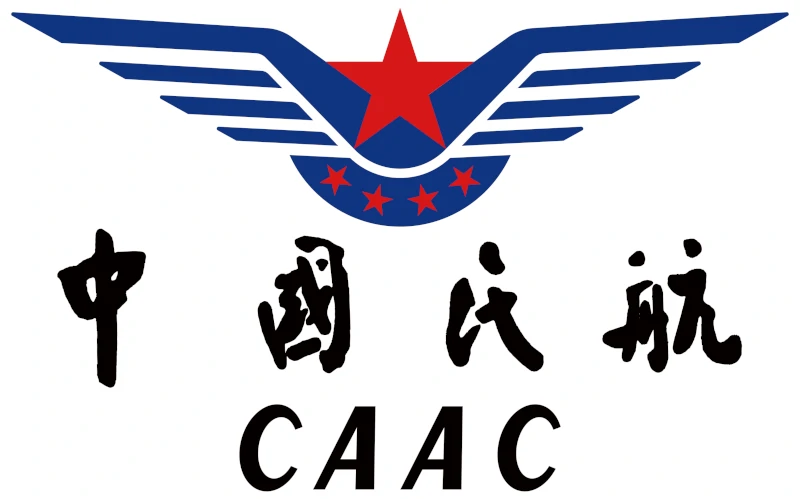That of flight, is perhaps one of humanity’s oldest and most common dreams. In every civilization flight has always been seen as something divine and fascinating, and starting from a dream, thanks to the passion of many people today the dream of flying has become a reality. From Icarus to the first Assembly Kits, let’s see which were the greatest authors in the realization of this most common dream.

The First Myth: Icarus
Icarus has great importance in the history of flight because he probably represents the first myth related to the innate human desire to fly. According to Greek mythology, Icarus and his father Daedalus built wings made of feathers and wax to try to escape from Crete. A DIY project… However, Icarus, caught up in the excitement, came too close to the sun, which melted the wax of his wings and caused him to crash. This story symbolizes man’s desire to overcome the limits of the earth and reach for the sky.
The figure of Icarus has inspired many pioneers of flight throughout the centuries, who have tried to realize this dream. The myth of Icarus has also become a symbol of courage, daring and perseverance in achieving a goal as ambitious as flight. Although the story of Icarus ends tragically, it helped stimulate the imagination and ingenuity of inventors who later helped make flight a reality.
The myth of Icarus also indirectly emphasized the importance of understanding the laws of physics and using appropriate materials. This taught flight explorers the importance of carefully studying both materials and environmental conditions to ensure the safety and effectiveness of their inventions.
The Montgolfier Brothers: A First Contribute to the Dream of Flying.
The invention of hot-air balloons by the Montgolfier brothers made a significant contribution to the history of flight. This invention, which occurred in France in the 18th century, paved the way for new possibilities in aviation.
The first hot-air balloons were a great success and attracted the attention of many people around the world. This invention proved that flight was possible and inspired many other inventors and experimenters to look for ways to improve and perfect the concept of flight.

Hot-air balloons also had a significant impact on science and the understanding of aerodynamics. Indeed, experiments conducted with hot air balloons have provided important insights into air resistance, stability, and flight control.
In the flight museum in Seattle you can see a scale reconstruction of the first hot air balloon!
The Key Contributions of the Wright Brothers in the Dream of Flying.
One of their major contributions was the concept of three-dimensional airplane control (yaw, pitch and roll). Before the Wrights, airplanes were primarily controlled only in two dimensions, that is, forward and backward and sideways. The Wright brothers also introduced control of the airplane in the third dimension, i.e., attitude control of the airplane.
In addition, the Wrights developed an airplane control system based on the balance and motion of the human body. They carefully studied the flight of birds and applied all their findings to create a system that would enable the airplane to fly in a stable and perfectly controlled manner.
The Wrights made the first successful controlled and powered flight on December 17, 1903. This historic flight, which lasted “only” 12 seconds and covered a distance of 36.5 meters, proved that motorized flight was possible and paved the way for the development of modern aviation.

Other notable Figures who played a Role in making the Dream of Flying a Reality
The history of flight sees many participants, and there are several people who made this dream possible.
- Leonardo da Vinci: This Renaissance genius studied and designed several flying machines, including the famous ornithopter. Although his inventions were never realized during his lifetime, they inspired many flight pioneers in later eras.
- Otto Lilienthal: Considered the father of unpowered aviation, Lilienthal devoted his life to the study of gliding flight. Through his experiments and publications, he provided important information on aircraft stability and control.
- Alberto Santos-Dumont: This Brazilian aviator is known for making the first recorded public flight in a powered airplane in 1906. His aviation innovations helped develop lighter and more maneuverable aircraft.
- Charles Lindbergh: In 1927, Lindbergh became the first pilot to make a nonstop solo flight from New York to Paris. This pioneering flight proved the feasibility of transatlantic flights and sparked great interest in commercial aviation.
- George Cayley and his experiments: During the 19th century, George Cayley, considered the father of aeronautics, conducted important experiments in flight. He developed the concept of the carrier wing, designed the first glider airplane and formulated the basic principles of aerodynamics, paving the way for controlled flight.
- Amelia Earhart: This celebrated American aviatrix was the first woman to fly solo over the Atlantic Ocean in 1932. Her determination to overcome gender challenges in aviation inspired many other women to pursue their dream of flying.
Today we live in an age where thanks to all these people it is possible to fly at any time and in almost any weather condition. We can choose which airline to fly with and choose different prices and comforts. We can recently even build our own flying vehicle in a weekend thanks to assembly kits and live the dream that began with our beloved Icarus, safely.
If you feel like spending a little and making the best investment of your life, take a look at the Dragon assembly kit from the company RotorX.

